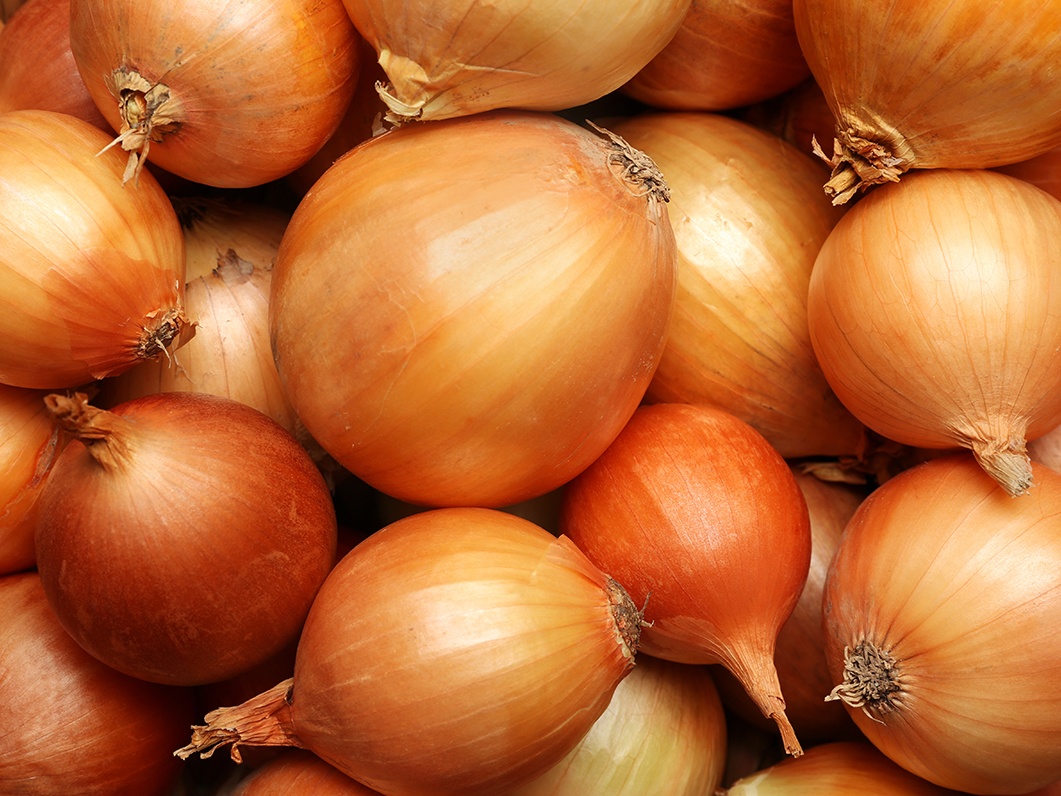MARKET
California:
Robert Bell with Western Onion Sales in Camarillo told us on Oct. 15 harvest continues in the Salinas and Cuyama Valleys. “Inquiries and sales continue South of the Border, Central and South America,” he said.
Idaho and Washington:
John Vlahandreas with Wada Farms reported on Oct. 16 ahead of his travel to PMA Fresh Summit, “Production has been curtailed this week with so many people traveling to PMA. People are already talking about the market moving up and higher prices for next week, and that’s all good. Agriculture, in general, is pretty fragile this year, and it’s not just onions.” He went on to say, “I think it’s going to be the talk at PMA. Up until this point, no one has really seen the potential of what’s going to happen with availability, and we may not have a lot of believers right now — but it’s going to happen. There is plenty of uncertainty about how the crop is going to turn out. With the wet spring and late planting in the Northwest and issues with weather and harvest in the Idaho Eastern Oregon area, I think we are going to see everyone start becoming believers that prices are going to inevitably go up.” And, John added, “I will say that all of the onions that are being shipped are in excellent condition.”
Idaho/E. Oregon:
Steve Baker with Baker & Murakami Produce in Ontario, OR, told us on Oct. 16 that demand “has been slightly better this week than the past several weeks.” He said, “I would say demand has been equal across the board on the different sizes.” And he said the market “has been steady up to now for this week,” adding, “We have good availability on yellows, reds, and whites — except we are very tight on medium whites. Quality has been very good.” Steve commented on the weather, noting, “Mother Nature has not been very kind to us on finishing our harvest. We are forecasted to have rain Thursday and Saturday, and I believe as of Wednesday morning the area still has 20-25 percent of the crop on the ground. I’m hearing the same thing from multiple sources.” Grant Kitamura of Baker & Murakami added to the weather comments that as a region, the Idaho-E. Oregon Onion Committee is working with USDA and the Inspection Service to put in place measures to help ensure that no freeze damaged onions are packed and shipped. He said, “For those of that remember 1985, we learned a lot from how important it is to reassure our customers that we will not ship product that has been damaged by a freeze.” And, Grant said, “It’s also important to remember that at least 80 percent of the region’s onions are in storage and are in excellent shape. Many of us have great relationships with processors, and there won’t be a problem finding a home for onions that don’t make grade. The bottom line is that receivers can feel confident that they are getting a top-quality onions from Idaho and Eastern Oregon.”
Jason Pearson with Eagle Eye Produce’s Nyssa, OR, office provided his report when he landed in Anaheim for PMA Fresh Summit. “Demand has been slower this week than normal, but we are staying busy with our program business. We are shipping all sizes and colors, but it’s primarily yellows. Quality has been excellent out of both areas. I really don’t think the market is where it should be, particularly with the situation with freezing we’ve had. Since we really don’t know how it’s going all play out and if we are going to end up with some degree of shortage due to weather, this market should be a lot higher and it isn’t. Some shippers aren’t getting it, but the market really should be coming up.”
Western Colorado:
David DeBerry with Southwest Onion Growers in McAllen, TX, told us on Oct. 16 his growers on the Western Slope of Colorado were finished with intermediates and would start shipping storage on Nov. 4. “We lost 10 percent or less of the intermediates, and it looks like a 25 percent loss of storage,” he said. Normally the region ships into early February, but David said this year could clean up earlier. “We could be done by late December or New Year’s if movement is good,” he said. And, he added, quality has been “very good, with the size off a little.”
Northern Colorado:
John Harris with Paradigm Fresh in Fort Morgan said on Oct. 14 that weather-related losses in the West might not be “impactful from a market standpoint until probably March. Once we get to March, there are so many issues facing the market that will determine whether the thing will get a bump or remain in the pits. At the moment it’s anyone’s guess, but past experiences would suggest that this thing will likely be a bear market until the summer of 2020.” On Wednesday, Oct. 16, John updated his report with, “PMA week is here, and the show starts Friday. The Paradigm team is headed out tomorrow morning, and hopefully, we’ll see some of you out there.” He continued, “Still not much to report in terms of an uptick in business. It’s a little discouraging to be real honest. This is a stretch that has gone on for too long.” John added, “The market is falling when it should be going up, and that is concerning as well. We, like everyone else, have plenty of offers. As my buddy Jason said it best, don’t be afraid to call and put us to work. God knows we have plenty of time to work on whatever project you toss our way!”
Broker’s Perspective:
Rick Greener with Greener Produce in Ketchum, ID, told us on Oct. 16, “Basically, the weekend has started. It’s always this way on the week of PMA. Most buyers put in their orders last week and the beginning of this week so they can focus on travel and participation in PMA.” Rick continued, “We do have some orders on the books, and orders are coming in, but it’s going to get pretty slow for the rest of the week. Right now, we are shipping out of Washington, Idaho, Oregon, Utah and Michigan. The quality has been excellent from all areas, too. On the market, there really isn’t much to say, except it remains steady.”
CROP
California:
Robert Bell with Western Onion Sales in Camarillo said weather in the Golden State was “sunny and 76” on Oct. 15, adding, “We’re starting to put seed in the ground tomorrow, wet on Oct. 21.” And, he added, crews were “prepositioning harvest equipment for April.”


